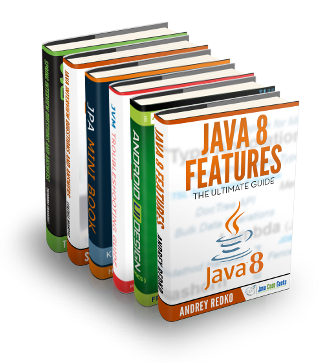AWS Lambda Cost Optimization Techniques in 2025
As serverless computing continues to grow in popularity, AWS Lambda remains a cornerstone for developers looking to build scalable, event-driven applications. However, as workloads increase, so do costs—especially when inefficiencies like cold start latency and over-provisioned resources come into play. In 2025, optimizing AWS Lambda costs is more critical than ever, and this guide will walk you through practical techniques to reduce expenses while maintaining performance.
1. Understanding Cold Start Latency
Cold starts occur when AWS Lambda initializes a new instance of your function to handle a request. This process involves loading the runtime, dependencies, and your code, which can take anywhere from a few milliseconds to several seconds. While cold starts are inevitable, they can significantly impact both latency and cost, especially for applications with sporadic traffic patterns.
For example, imagine a ride-sharing app that uses Lambda to process ride requests. During peak hours, Lambda scales up to handle the load, but during off-peak times, it scales down. When a sudden surge of requests arrives, cold starts can delay response times, leading to a poor user experience. Additionally, the constant scaling up and down can increase costs due to the overhead of initializing new instances.
Technique 1: Provisioned Concurrency
One of the most effective ways to combat cold starts is by using Provisioned Concurrency. This feature allows you to pre-warm a specified number of Lambda instances, ensuring they are ready to handle requests instantly.
Real-World Example: E-Commerce Checkout System
An e-commerce platform uses Lambda to process checkout requests during flash sales. Without Provisioned Concurrency, cold starts during the sale cause delays, leading to abandoned carts. By enabling Provisioned Concurrency for the checkout Lambda function, the platform ensures that instances are always ready, reducing latency and improving conversion rates.
Cost Consideration:
While Provisioned Concurrency eliminates cold starts, it comes at a cost. You pay for the pre-warmed instances even when they’re not in use. To optimize costs, analyze your traffic patterns and provision only the necessary number of instances. For example, if your traffic spikes at 8 AM daily, provision concurrency just before the spike and scale it down afterward.
Technique 2: Optimize Function Memory and Timeout Settings
AWS Lambda charges based on the amount of memory allocated to your function and the duration of its execution. Over-provisioning memory or setting excessively long timeouts can lead to unnecessary costs.
Real-World Example: Image Processing Service
A media company uses Lambda to resize images uploaded by users. Initially, they allocated 1024 MB of memory to each function, but after analyzing performance metrics, they found that 512 MB was sufficient. By reducing the memory allocation, they cut costs by 50% without impacting performance.
How to Optimize:
- Use AWS Lambda Power Tuning, an open-source tool, to find the optimal memory configuration for your function.
- Set realistic timeout values based on your function’s average execution time. For example, if your function typically completes in 2 seconds, set the timeout to 5 seconds to avoid overpaying.
Technique 3: Use AWS Lambda SnapStart (Java-Specific)
For Java applications, cold starts can be particularly problematic due to the JVM’s initialization overhead. AWS Lambda SnapStart, introduced in 2022 and widely adopted by 2025, addresses this issue by taking a snapshot of the initialized execution environment and reusing it for subsequent invocations.
Real-World Example: Financial Transaction Processor
A fintech company uses Java-based Lambda functions to process financial transactions. Before SnapStart, cold starts caused delays during high-traffic periods, leading to customer complaints. After enabling SnapStart, the company reduced cold start latency by 90%, improving transaction processing times and customer satisfaction.
How to Enable SnapStart:
- Enable SnapStart in your Lambda function configuration.
- Ensure your application is compatible with SnapStart by testing it thoroughly.
Technique 4: Implement Efficient Code and Dependency Management
The size and complexity of your Lambda function’s code and dependencies directly impact cold start times and execution costs. Bloated dependencies or inefficient code can slow down initialization and increase execution duration.
Real-World Example: Data Analytics Pipeline
A data analytics company uses Lambda to process streaming data from IoT devices. Initially, their function included unnecessary libraries, increasing the deployment package size and cold start times. By removing unused dependencies and optimizing the code, they reduced the package size by 70%, resulting in faster cold starts and lower costs.
Best Practices:
- Use lightweight libraries and frameworks.
- Minimize the size of your deployment package by excluding unnecessary files.
- Leverage AWS Lambda Layers to share common dependencies across multiple functions.
Technique 5: Leverage Step Functions for Complex Workflows
For applications with complex workflows, using AWS Step Functions can help reduce Lambda costs by breaking down tasks into smaller, reusable functions. Step Functions allow you to orchestrate multiple Lambda functions, retries, and error handling, often at a lower cost than running a single monolithic function.
Real-World Example: Order Fulfillment System
An online retailer uses Lambda to handle order fulfillment, which involves multiple steps like payment processing, inventory updates, and shipping notifications. Initially, they used a single Lambda function for the entire workflow, leading to high costs and long execution times. By migrating to Step Functions, they reduced costs by 30% and improved workflow reliability.
How to Implement:
- Break down your workflow into smaller, discrete tasks.
- Use Step Functions to orchestrate the tasks and handle retries or errors.
Technique 6: Monitor and Analyze Usage
Regularly monitoring your Lambda usage can help identify inefficiencies and opportunities for cost optimization. AWS provides tools like CloudWatch and Cost Explorer to track metrics like invocation counts, execution duration, and memory usage.
Real-World Example: SaaS Application
A SaaS company noticed that one of their Lambda functions was being invoked thousands of times per hour, even during periods of low activity. Upon investigation, they discovered a misconfigured event trigger. By fixing the trigger, they reduced invocations by 80%, significantly lowering costs.
Best Practices:
- Set up CloudWatch alarms to monitor invocation counts and execution times.
- Use AWS Cost Explorer to identify cost trends and anomalies.
2. Conclusion
In 2025, optimizing AWS Lambda costs requires a combination of strategic planning, efficient coding practices, and leveraging AWS’s advanced features like Provisioned Concurrency and SnapStart. By addressing cold start latency, optimizing resource allocation, and monitoring usage, you can significantly reduce costs while maintaining high performance.
Whether you’re running a small startup or a large enterprise, these techniques will help you get the most out of AWS Lambda without breaking the bank. Start implementing them today and watch your serverless costs—and cold start worries—melt away. 🚀




